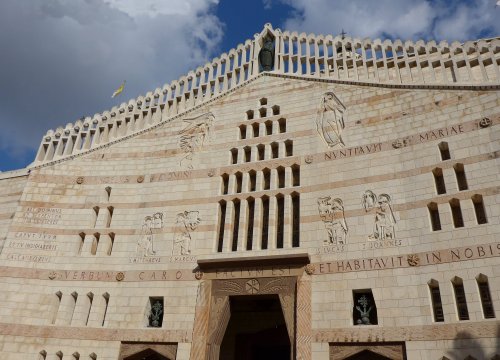
The other issue for me is the buildings themselves. Most of those marking the sacred spots are modern, many from the twentieth century. Not all are to my taste. This is certainly the case of the Church of the Annunciation in Nazareth, constructed in the 1960s. The interior of this church is raw concrete - the idea was to keep it plain and simple, but I am not a fan of concrete.
By tradition, the site is that of the Grotto of the Annunciation, where Mary lived. The grotto is on the lower floor of the present church. It is said that the first church here was founded by St Helena, mother of Constantine, who also founded the Church of the Holy Sepulchre in Jerusalem and the Church of the Nativity in Bethlehem. The second church was built on the ruins of the first by the Crusaders c 1103, though never completed. At this point the church was cared for by Franciscans, still an important order in the Holy Land today. It was destroyed by the Mamluks in 1260, but the Franciscans hung on in Nazareth for the next 300 years.
In 1620 the local emir allowed the Franciscans to return and build a small chapel enclosing the grotto. In 1730 a much grander church was built; it was extended in 1877, then demolished in 1954 to make room for the present church.
The church is on two levels. Below are images of the grotto of Mary on the ground floor. On the higher floor are some splendid mosaics showing shrines to the Virgin from around the world. The one shown below is of the shrine at Walsingham, which we will be visiting.
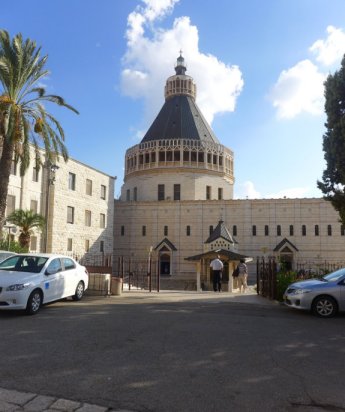
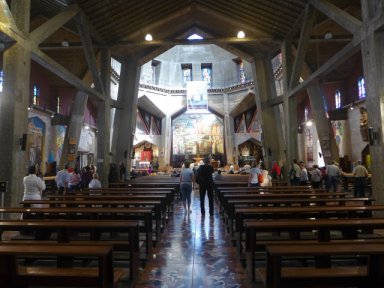
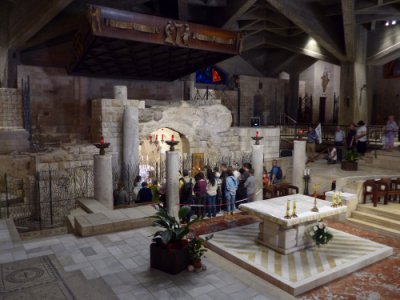
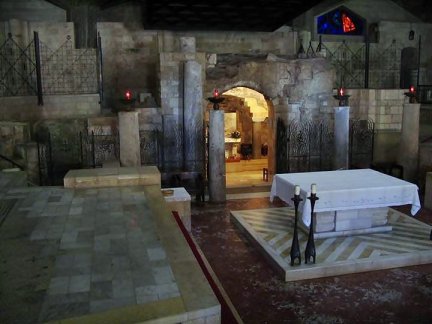
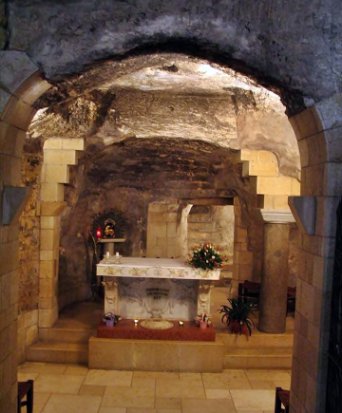
As mentioned above, religious are often in disagreement in the Holy Land about the correct location of sacred sites; this is particularly true with the Orthodox church. Below is the Greek Orthodox church of the Annunciation. A familiar legend often shown in art is that the Annunciation did not take place indoors, in the house of Mary, but at a well where she was collecting water. Inside the Orthodox church is the site of a well, shown below, claimed to be the authentic site. But that is not the end of the story. In a main street of Nazareth is what is now a drinking fountain, also claiming to be the site of the Annunciation. Pilgrims collect the water from here as a treasured memento of their journey.
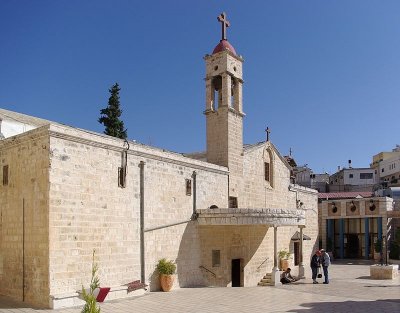
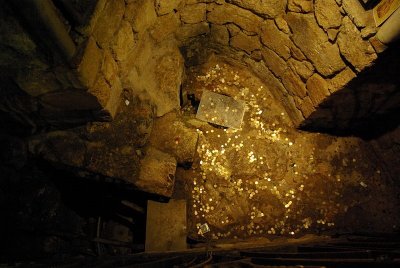
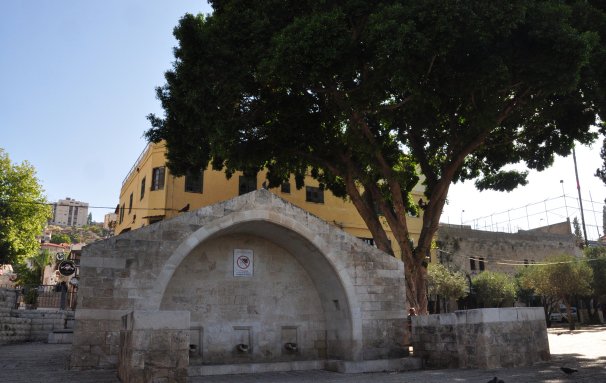
The houses of Mary page 1 Home page - explore the site